
Any Roosevelt Island resident can tell you that if there is going to be momentary delay in their morning mass transit commute off the Island it will take place right outside the local subway station.
The reasons for this congestion is that Main Street (or whatever that side is called nowadays) is (1) at it thinnest point, (2) is at an angle, (3) has the Red and Q102 buses stopping on either side of the road trying to discharge / pickup passengers (4) parked delivery trucks, (5) is adjoined by a unofficial parking lot for MTA employees and MTA construction workers, and lastly includes (6) intermittent but constant construction vehicles related to Southtown expansion. And on top of all this is one of the only access roads for employees and staff to get to (7) the Goldwater Hospital Campus.
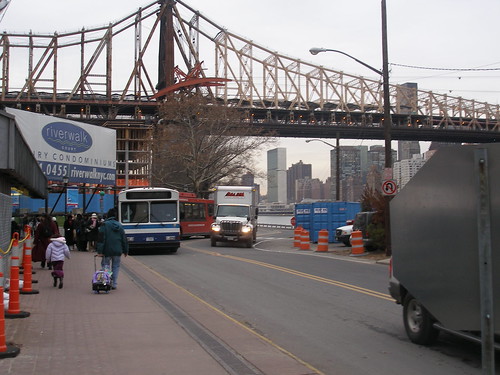
The presence of the Red and Q102 bus is somewhat constant during rush hour and when RIOC tried to move one leg of the Red Bus route to Main Street proper that was met with quick resistance and eventually settled back to its present pattern of pickups right outside the subway.
The only factor that perhaps can me modified is where the delivery trucks are allowed to park. Currently they either sit on the subway side at the bottleneck or park in the bus drop off cutout just beyond the bottleneck.
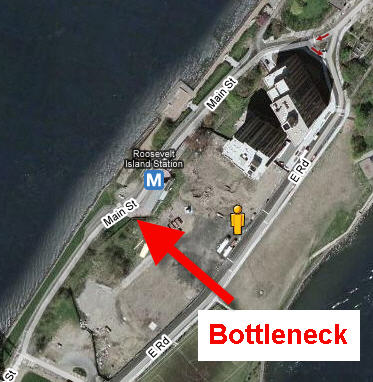
At least theoretically two of these factors will disappear over time, #s 5 and 6, as construction ceases in Southtown.
In truth RIOC should hire a professional traffic engineer to determine what to do. But as a layman with an opinion here is my best shot:
One possible congestion easing plan would be to require the MTA employee and construction worker personal vehicles to park where the Southtown construction workers park just off the Eastern branch of Main Street. Then widen the bottleneck as close to the subway air vent as possible creating a wider traffic lane and designated delivery parking spots. These spots should be parallel to the road with defined entry points. We don't need trucks backing out into traffic causing the same issues to resurface. The picture above is an example of how veicles constantly move into the opposing lanes when traffic is backed up.
Certainly no one would ever agree to congestion pricing on Roosevelt Island but we do need something to ease traffic through the morning rush hour as this juncture is an accident waiting to happen with so many pedestrians and vehicles being forced through a space no more than 50 to 75 feet wide (my guess) at its thinnest point.





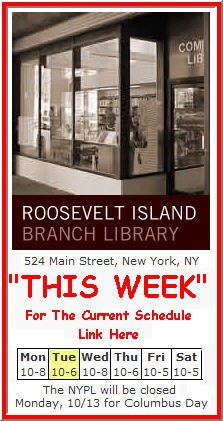



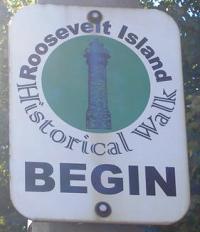

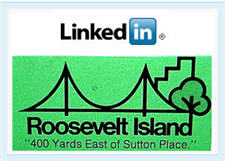















No comments:
Post a Comment